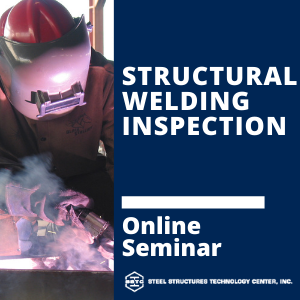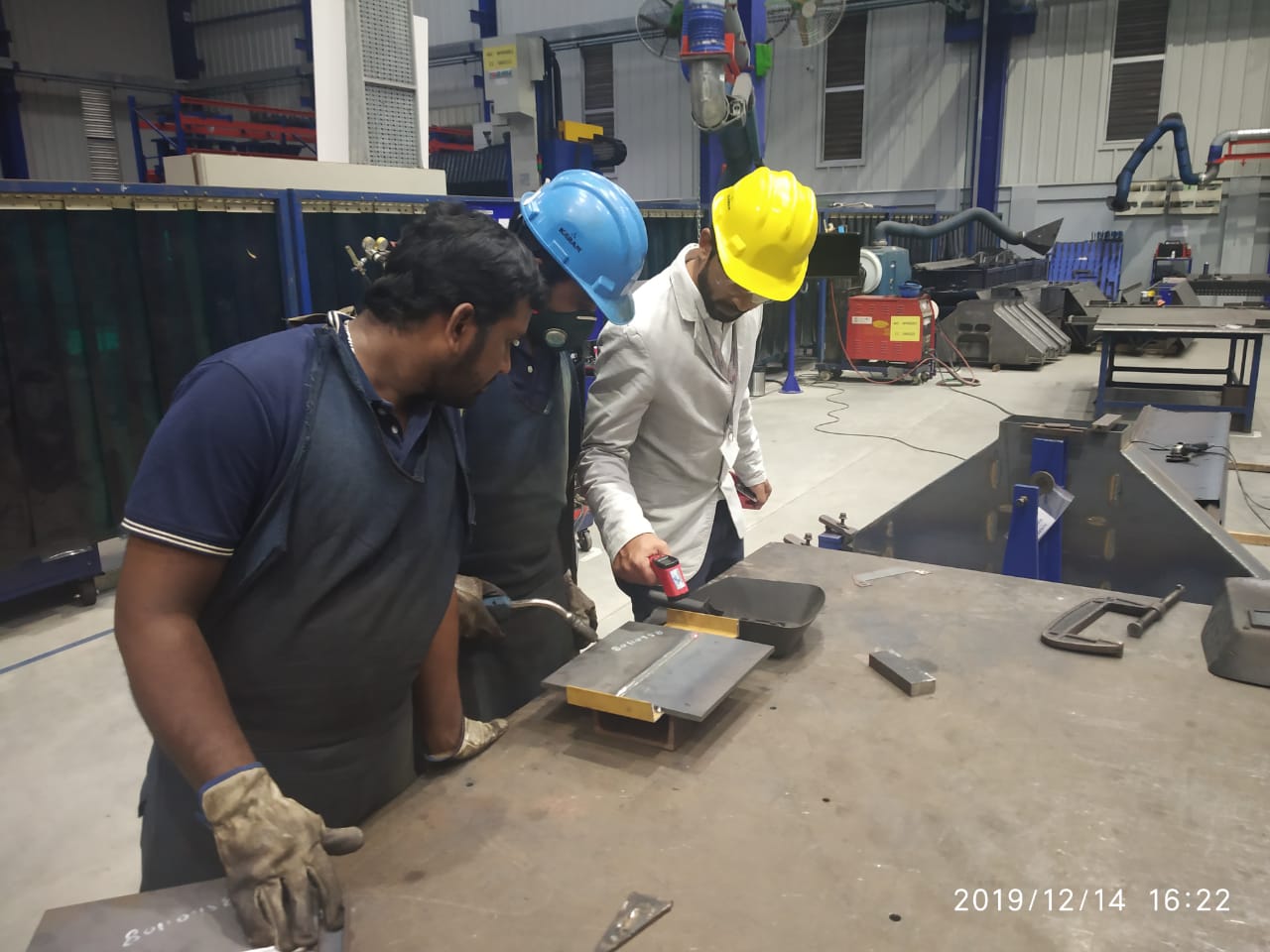The Ultimate List for Welding Inspection Gilbert Arizona: Ensuring Safety and Precision
Discovering the Relevance of Welding Assessment in Industrial Applications: Protecting Against Failures and Enhancing Longevity
Welding inspection serves as an important line of protection in industrial applications, guaranteeing the structural stability and dependability of welded elements. By methodically recognizing issues such as porosity and incomplete fusion, inspections not only avoid failures yet also expand the life-span of necessary properties.
Duty of Welding Examination
Welding evaluation acts as an important secure in commercial applications, making certain that bonded frameworks satisfy specified standards of top quality and safety. This procedure involves a systematic exam of welds to confirm their integrity, toughness, and conformity with well-known codes and requirements. The function of welding inspection is complex, including both visual assessments and non-destructive testing approaches, which may include ultrasonic, radiographic, or magnetic fragment testing.

Additionally, welding evaluation plays a crucial duty in regulative compliance. Ultimately, the role of welding evaluation is crucial in promoting safety, enhancing performance, and protecting investments in industrial facilities.
Typical Welding Problems

One of the most widespread issues is porosity, identified by tiny gas pockets caught within the weld metal. This happens due to contaminants or incorrect protecting gas, endangering the weld's toughness. An additional considerable defect is incomplete fusion, where the weld steel falls short to bond effectively with the base product, potentially causing architectural weak points.
Cracks can also establish throughout or after the welding process, usually credited to thermal stress and anxieties or incorrect air conditioning rates. In addition, damaging, where the base metal is eroded along the weld grain, can deteriorate the joint and is often brought on by too much warm input or incorrect technique.
In addition, lack of infiltration happens when the weld metal does not get to the origin of the joint, causing inadequate stamina. Comprehending these common problems is vital for examiners and welders alike to ensure that welded structures fulfill safety and security and efficiency standards, inevitably stopping possible failures in industrial applications.
Advantages of Regular Assessments
Normal evaluations offer as a critical secure in making sure the dependability and long life of bonded structures. These assessments identify possible defects and weaknesses that may endanger the integrity of welds, allowing for timely remediation prior to concerns rise. By executing an organized evaluation routine, companies can considerably reduce the danger of tragic failings that may result in expensive downtime, tools substitute, and even accidents.
Additionally, normal inspections contribute to enhanced high quality control throughout the welding process. By adhering to a constant examination timetable, companies can guarantee that their welding techniques fulfill established top quality criteria and finest methods. This not just promotes a culture of accountability but also motivates continuous enhancement amongst welding employees.
Additionally, routine evaluations facilitate far better upkeep preparation. By identifying wear and tear early, companies can strategically set up repair services and replacements, minimizing disturbance to operations. This aggressive approach eventually results in extensive asset life expectancy and improved overall performance.
Last but not least, Learn More Here a commitment to normal examinations can boost a firm's online reputation in the market. Stakeholders and customers increasingly value organizations that prioritize safety and security and top quality, therefore improving trust fund and potentially bring about raised service chances.
Sector Requirements and Laws
Sticking to market requirements and guidelines is an essential element of welding inspection that complements the advantages of normal analyses. These standards, established by organizations such as the American Welding Society (AWS) and the American Society of Mechanical Engineers (ASME), offer a structure for finest methods in welding procedures, products, and inspection strategies. Compliance with these regulations makes certain that welds fulfill the called for high quality and safety and security benchmarks, considerably lowering the danger of structural failings.
Governing bodies like the Occupational Safety And Security and Health Administration (OSHA) further impose guidelines that secure employees and the setting during welding operations. By complying with these established criteria, markets can boost the integrity of their parts and structures, guaranteeing they execute as planned under various functional problems.
Additionally, adherence to market requirements cultivates uniformity in quality control, facilitating smoother interaction amongst stakeholders and governing companies. This positioning not just minimizes liability dangers yet also boosts the reputation of companies in affordable Check This Out markets. Inevitably, compliance with welding criteria and regulations is not just a lawful commitment; it is a vital financial investment in security, efficiency, and long-lasting functional success.
Future Trends in Welding Examination
As markets continue to advance, the future of welding assessment is poised to integrate sophisticated technologies that boost precision and performance. Among the most considerable patterns is the fostering of automation and robotics in examination procedures. Automated systems can carry out examinations swiftly, reducing human error and enhancing throughput in making atmospheres.
Furthermore, the combination of synthetic intelligence (AI) and artificial intelligence algorithms will make it possible for predictive analytics, enabling for real-time analyses and positive maintenance (Welding Inspection Gilbert Arizona). By assessing information from previous evaluations, these modern technologies can determine patterns that could show prospective failures, consequently extending the life expectancy of welded elements

Additionally, the trend towards digitalization will certainly bring about improved data management systems that assist in better tracking, reporting, and visit this site conformity with market criteria. In summary, the future of welding assessment is identified by technical developments that guarantee to dramatically improve integrity, safety, and operational efficiency in numerous industrial applications.
Conclusion
To conclude, welding evaluation offers a crucial function in making certain the stability and toughness of welded structures throughout different industrial applications. By identifying flaws such as porosity and insufficient combination, normal examinations play a considerable function in risk mitigation and top quality assurance. Adherence to industry requirements and guidelines even more improves functional safety and security and integrity. As innovations in modern technology proceed to evolve, the future of welding evaluation assures enhanced accuracy and effectiveness, eventually adding to the longevity of crucial frameworks.
Welding examination serves as a critical line of defense in industrial applications, guaranteeing the architectural stability and reliability of bonded elements.Welding assessment offers as a crucial secure in industrial applications, making certain that welded frameworks satisfy specified requirements of top quality and safety - Welding Inspection Gilbert Arizona. Eventually, the role of welding examination is vital in promoting safety and security, enhancing performance, and shielding financial investments in industrial infrastructure
These criteria, established by companies such as the American Welding Society (AWS) and the American Society of Mechanical Engineers (ASME), provide a framework for finest methods in welding processes, products, and inspection techniques.In final thought, welding inspection serves a crucial feature in making sure the integrity and longevity of bonded frameworks throughout different industrial applications.